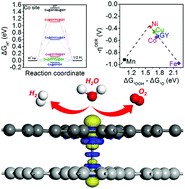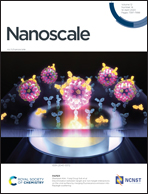Impact of electron transfer of atomic metals on adjacent graphyne layers on electrochemical water splitting†
Abstract
Efficient electrocatalysts are needed for both the hydrogen evolution reaction (HER) and the oxygen evolution reaction (OER), while the influence of electron transfer from the adjacent layer of multilayered electrocatalysts on their catalytic performance is usually neglected. Here, we used the single cobalt atom trapped graphyne catalyst (Co@GY) to study the feasibility of modulating its water-splitting catalytic activity through interfacial electron transfer. A series of Co@GY/transition-metal doped graphyne double-layered structures (Co@GY/GY and Co@GY/TM@GY, TM = Mn, Fe, Co, Ni, Cu) are systematically evaluated for water splitting via theoretical computations. The electronic structure analyses of different stacking cases revealed that the atomic metals on the adjacent TM@GY layer remarkably tune the electronic structures of the Co atom in the Co@GY layer. A strong linear correlation between ΔGH* and the d band center of the Co atom was found, suggesting that the HER activity on the Co atom can be tailored by adjusting the TM on the adjacent TM@GY layer with different d-electron occupations. The volcano-type trend of OER catalytic performance is obtained to show the best Co@GY/Ni@GY catalyst for the OER with an over-potential of 0.38 V, indicating that higher catalytic performance arises from moderate interfacial electron transfer. These results arouse a re-thinking of the intrinsic activity origins of single-atom catalysts (SACs) and offer a new strategy for the structure designing of SACs.



 Please wait while we load your content...
Please wait while we load your content...